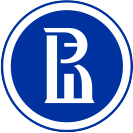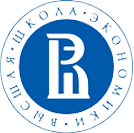The paper explores the specifics of corruption risk assessments in the public sector aimed at detecting systematic flaws leading to corruption in the performance of public bodies.
The approaches to corruption risk assessment at the domestic level can differ in:
1. Subject of assessment
Depending on the person who conducts assessment, there are three types of assessment approaches: centralised, decentralised and transparency-oriented.
The centralised assessment is carried out by an external body, such as an anti-corruption agency or a supreme audit institution, or a division within other control body such as the ministry of internal affairs, upon request or in the event that the relevant public body is a defendant in criminal proceedings concerning a corruption case.
The U4 experts stress that this approach makes it possible to objectively assess internal processes and to prevent corruption provided that there is a proper mechanism for further monitoring of implementation of recommendations. However, the centralised assessment requires considerable human and financial resources and can make excessive bureaucratic pressure on the body (organisation) subject to assessment that should normally provide large amounts of data for analysis.
An example of the centralised approach is the Corruption Prevention Department of the Special Investigations Service of the Republic of Lithuania (Lietuvos Respublikos specialiųjų tyrimų tarnyba) which has the Corruption Risk Division. The latter is responsible for detecting inconsistencies between the existing legal acts and the actual performance of public bodies and organisations.
Decentralised assessments imply that bodies conduct internal assessments directly without any external guidance. This approach usually takes the form of questionnaires, focus groups, or interviews and can either involve all employees, or just those who hold high-risk positions (human resources, procurement, etc.).
The U4 experts see such advantages in this approach as less need for human and financial resources and the possibility to explore individual experiences of participants. At the same time, this approach has certain constraints, in particular, if the corporate environment is such that employees are afraid of expressing themselves freely and say only what they think would please the management, while the management is unwilling to take corrective action due to the lack of any external control.
An example of the decentralised approach is the SAINT system that existed in the Netherlands until 2016. It implied that bodies applied directly to the National Integrity Office (Bureau Integriteitsbevordering Openbare Sector) for assessment. Subsequently, two officers of the Office conducted interviews with servants. Based on their responses, the Office provided recommendations to the bodies on how to mitigate corruption risks.
Yet another type of approach is transparency-oriented which is not used separately and supplements the centralised or decentralised approaches. It ensures public access to information on corruption risks and enhanced transparency of data on the activities of public bodies (for example, in public procurement) and certain territories (towns, municipalities, regions) or sectors (education, healthcare, construction and others).
The main advantage of this approach is transparency and accessibility of data that can be used by civil society organisations, the media or citizens who want to take part in detecting and preventing corruption. However, this type of assessment does not usually imply the presence of the mechanisms for mitigating corruption risks and requires considerable resources to collect data, develop and maintain a website/an application, its systematic update etc.
The transparency-oriented approach can be illustrated by the example of Mexico where it complements the centralised assessment. The functions to conduct assessment rest with the National Anti-Corruption System (Sistema Nacional Anticorrupción – SNA) that includes public bodies (the Ministry of Public Administration, Superior Audit of the Federation, Special Prosecutor Office, National Institute of Transparency, and the Federal Court of Administrative Justice) and representatives of civil society through the Committee of Citizen Participation (Comité de Participación Ciudadana) that has divisions (32 in total) at the federal and regional levels. The participants of the SNA usually take decisions to carry out assessment based on the analysis of open data, reports of civil society organisations or upon request of the Committee of Citizen Participation; as a rule, the functions to conduct assessment are entrusted to one or several employees of the SNA. The latter, based on the findings of assessment, develop together with civil society organisations and academia recommendations on how to minimise corruption risks.
2. Basis for assessment
Corruption risk assessment can be conducted with the use of:
- primary data, i.e. the data collected by the bodies that undertake assessment on their own;
- secondary data.
The data used can be both quantitative (statistics) and qualitative (for instance, responses to surveys, interviews and/or surveys of focus groups).
An example of the body that uses different types of primary data is the Indonesian Corruption Eradication Commission (Komisi Pemberantasan Korupsi) that analyses legal acts and conducts its own public corruption perceptions surveys and surveys on the quality of public services to undertake assessment.
Conversely, the aforementioned Lithuanian Corruption Prevention Department uses secondary data by following journalist investigations and analysing the findings of corruption perceptions surveys conducted by different bodies. Based on this information it decides which public bodies should be subject to inspection procedures.
3. Object of assessment
Assessment can be aimed at detecting certain corruption risks or indicators of numerous different risks related to corruption at once.
In Austria and Colombia for instance, the data allowing for detecting money laundering and terrorist financing risks are analysed.
Slovenia assesses the degree of transparency of performance of bodies, information on the protection of whistleblowers, respect of legal provisions by citizens.
In Serbia, Moldova, Montenegro and Albania, corruption risk assessment is focused on the detection of corruption-related factors in legal acts (draft legal acts).
In South Korea, besides anti-corruption assessment of acts, self-assessment of anti-corruption measures is conducted by public bodies, an annual survey of 5,000 citizens aimed at evaluating corruption perceptions in general and a survey of civil servants and citizens with regard to their corruption perception and personal experience concerning over 700 public bodies are undertaken (it is noteworthy that according to the U4 information, a public survey alone for the South Korean Anti-Corruption and Civil Rights Commission costs around $2,500,000). Additionally, the Commission organises focus groups with the participation of experts and civil servants to develop recommendations on how to mitigate corruption risks for public bodies and organisations.
Challenges and recommendations
The U4 publication also contains key challenges that a country can face in conducting corruption risk assessments and puts forward recommendations on how to overcome them:
1. Institutional constraints: insufficient independence of competent bodies; lack of human and financial recourses; lack of proper interaction with the public bodies undergoing assessments.
In order to address this kind of challenges, the U4 experts believe it is necessary to regulate the relevant issues at the legal level, including the definition of the status of the body responsible for conducting assessments, its structure that takes into account its staff needs, its operational procedures, allocation of sufficient resources for its activities, procedure for its interactions with other public bodies, particularly as regards the requests and provision of necessary data.
2. Data quality and accessibility: the lack of resources for collecting primary data; insufficient data quality in terms of their reliability, accuracy, completeness, and consistency; inconvenient format of the data provided for their subsequent processing.
In order to address these challenges, the U4 paper suggests interacting with reliable data providers, invest in dataset building instead of storing information in separate documents in inconsistent formats, ensure standardized monitoring of data collection, also by developing affordable methodology finding the balance between extensive analysis and focused assessment of targeted corruption types.
3. Methodology: difficulties in developing a methodology that considers the resources available, while also offering sufficient coverage of different corruption types; potential for biases and subjectivity in the selection of methodology and analytical focus.
1) Decentralised assessments (this approach, however, entails risks of inconsistent employment of analytical instruments and poor compatibility of findings between bodies and organisations undergoing assessments);
2) Transition from focused methodologies at the initial stage of implementation of the mechanism to gradual expansion of the list of corruption risks assessed;
3) Establishment of clear criteria for selecting the methodology and analytical focus;
4) Transparency of assessments;
5) Engagement of stakeholders in assessments, for instance, by holding consultations with civil society organisations and other persons to get feedback on the methodology suggested, as well as throughout the whole assessment process.
4. Follow-up mechanisms: the lack of control mechanisms adopted in the follow-up to assessments of risk mitigation measures.
In order to address this challenge, the U4 experts consider it necessary to include the requirements to implement follow-up mechanisms in any risk assessment system; in this context, the choice of the format of these requirements – compulsory provision of reports enshrined in law as an obligation or voluntary implementation of recommendations based on good relations between public bodies will depend on the specifics of every single country.

